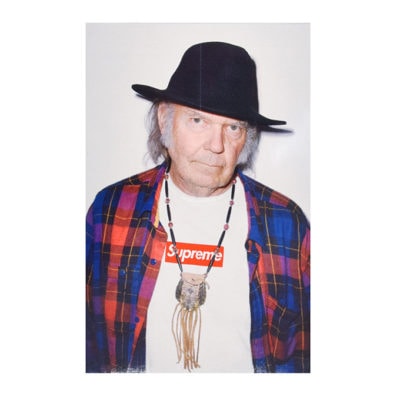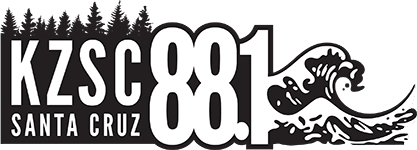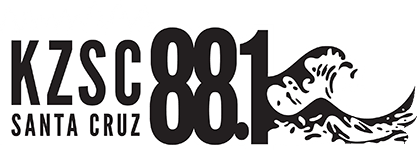
Looking back at Neil Young’s prolific 39-record career (videos & playlist below) in celebration of his 73rd birthday.
by dj hari
In fall of 2016 my roommate and I had just moved into the Merrill College A-dorms. We did as frosh in the dorms did and played our music for the entire hallway to know we had the most eccentric, obnoxious, if not slightly pretentious, taste in music. This meant as fellow hall mates studied for their midterms, they heard us lamenting having to miss Danny Brown at the Catalyst to attend a required plenary, doing duets of “Only One” by Kanye West in our respective shower stalls, or crooning to our acoustic cover of Chumbawumba’s “Tubthumping” with a small guitar we’d frequently steal from our third roommate. Later that November, Neil Young’s entire discography had come to Spotify.
In vein of the dad rock our #boomer fathers had raised us upon, we had had our fair share of classic rock experiences. And while he is somewhere probably blasting trap music at ultimate frisbee parties and I’m here at KZSC sharing the unbearable no-wave from Sonic Youth’s early days to the public’s dismay, we share fond memories of our 18 year-old selves putting on bad Neil Young falsettos, singing false lyrics to tracks off of Harvest.
Come October 25th, Neil Young had released his 39th record, Colorado. The only people who would be interested in a new Neil Young album, however, are those who are already familiar with his work, which could be a daunting task. At 39 studio albums, endless compilations, live recordings, and work with other bands, it’s hard to know where to start with such a prolific career. His career is vast, encompassing a multitude of genres from folk, psychedelic rock, and even forays into new wave, R&B, rockabilly, and even film scores and directing. He’s influenced the likes of alternative musicians such as Kurt Cobain, Eddie Vedder, Sonic Youth, and Thom Yorke throughout decades of songs written, political activism, and with his distorted guitar work earning him the title “Godfather of Grunge”. He’s had collaborations from artists across the musical spectrum from Linda Ronstadt and Emmylou Harris to Pearl Jam and Devo.
Here’s an incomplete history of Neil Young.
Neil Young & The Squires (1963-1965)
The Squires were one of Neil Young’s first bands, formed when Young was just around 18 years old, playing surf rock at local community centers and high schools in Winnipeg. Originally playing covers of other surf bands such as The Ventures, they soon began doing their own songwriting that would be basis for Young’s later work for years to come, re-recording songs from this era or reworking ideas from or inspired by his time with The Squires. Releasing one single in 1963, other recordings of this band can be heard on the Neil Young Archives Vol. 1.
Buffalo Springfield (1966-1968)
Young had been in Ontario with The Squires in 1965 when he had met Stephen Stills for the first time during his tour with The Company. Soon after this tour, The Company had broken up, Stills had become a session musician and Young had been playing with other bands before they met again in Los Angeles, forming Buffalo Springfield over a chance encounter on Sunset Boulevard. Taking their name from a brand of steam rollers, they soon became known for their multiple drug-related scandals, multiple lineup changes, and for the protest song “For What It’s Worth” by Stills. One of Young’s most famous contributions to the group is the song “No Soul”. written after an epileptic attack at a show in San Francisco, it is the only Buffalo Springfield song to feature all three singers (Stills, Young, and Richie Furay).
First Solo Record, First Record with Crazy Horse (1968-1969)
After the breakup of Buffalo Springfield, Young landed a solo record deal with Reprise, being managed by his friend and colleague Joni Mitchell’s manager Elliot Rodgers, who managed Young until Rodgers’ death in 2019. His 1969 solo debut, Neil Young contains staples of his live shows including “The Loner”.
Young later recruited Billy Talbot, Ralph Molina, and the late Danny Whitten as his backing band, Crazy Horse. Recorded in just two weeks, their debut, Everybody Knows This Is Nowhere, included “Cinnamon Girl”, “Cowgirl in the Sand”, and “Down by the River”; three songs which Young had written in a day while nursing a high fever.
Crosby, Stills, Nash, & Young (1969-1970)
Stephen Stills had come to Young asking that he become a sideman to his supergroup with David Crosby of The Byrds and Graham Nash of The Hollies. Young said he’d join only if he’d become a full member of the band. Young’s tenure with Crosby, Stills, Nash, & Young is considered to be the most creative period in the group’s history and had propelled Young’s solo career years after.
In the aftermath of the Kent State Massacre, Young wrote “Ohio”, which soon became a protest song that was banned by many radio stations due to its political implications against the Nixon administration.
After the Gold Rush, Harvest (1970-1972)
Young’s success in Crosby, Stills, Nash, & Young propelled him into stardom, with 1970’s After the Gold Rush being his commercial breakthrough. Its content was folksy and had lyrical content spanning drugs, relationships, and his resentment of racism. “Southern Man”, a criticism of racism, drew controversy in the South during the time of desegregation.
That fall, Young embarked on an acoustic tour, later nicknamed “Journey Through the Past”, after an unreleased track at the time, which included sold out shows, and famous performances at Toronto’s Massey Hall in 1971, which was recorded with the intentions of a live album, but was not available until appearing in compilations some 40 years later.
Many of the songs Young performed in this tour were included in Harvest, released in 1972. It was a expanding upon old themes in Young’s music, including “The Needle and the Damage Done” about heroin addiction in the music community (Danny Whitten of Crazy Horse would die of heroin overdose later that year) and “Alabama”, which was a redux of “Southern Man”, which Lynyrd Skynyrd would later reply to in lyrics of “Sweet Home Alabama” (“I hope Neil Young will remember/Southern Man don’t need him around”). Harvest also included work with the London Symphony Orchestra on two tracks, including on “A Man Needs a Maid”, a song about Young’s own insecurities in falling in love with actress Carrie Snodgress. Early versions of the songs were a performed as a medley with his only soon to be #1 single, “Heart of Gold”.
The Ditch Trilogy (1972-1974)
After the commercial success of Heart of Gold, Young underwent several personal troubles, including relationship hardships, his child, Zeke, suffering a mild aneurysm, and the sudden death of Crazy Horse’s Danny Whiten before a 62-date North American tour. Without time to grieve, Young performed electrified sets on tour for people expecting something similar to his acoustic tour the years before. With voice troubles and light alcoholism came an erratic tour that can be heard on 1973’s Time Fades Away, which Young calls his least favorite record, but has since been critically acclaimed and seen as an important document in his life. The deaths of Whiten and a roadie named Bruce Berry soon inspired Young to record 1975’s Tonight’s the Night.
After Time Fades Away, came 1974’s On the Beach, a commercially unsuccessful, yet highly praised album concocted on a “Honey Slides” bender, which was Young’s own recipe of sautéed marijuana and honey that “felt like heroin”.
Soon after, came Homegrown, an album darker in nature due to the downfall of Young’s relationship with Carrie Snodgress.
Collaborations, Reunions, Reformations (1974-1978)
This period saw Neil Young going on a reunion tour with Crosby, Stills, & Nash, collaborating with Linda Rondstadt and Emmylou Harris, reforming Crazy Horse with a new guitarist, Frank Sampedro, and being a part of The Last Waltz tour with Joni Mitchell, Bob Dylan, and the final performances of The Band. Some highlights of this time include Zuma, featuring “Cortez the Killer” about Spanish conquest through the eyes of the Aztecs, and Martin Scorsese having to delay the release of The Last Waltz concert film to work around the chunk of cocaine hanging out of Young’s nose during one of his performances.
Rust Never Sleeps, label change and experimental years (1979-1988)
1979’s half acoustic, half electric, part live album Rust Never Sleeps was seen as a turning point in two generations of Neil Young’s fanbase and sound. Bookended by the acoustic “My, My, Hey, Hey (Out of the Blue)” and the electric, distorted, Devo-inspired “Hey, Hey, My, My (Into the Black)”, the album won 1979’s Pazz & Jop poll, which can be seen performed by Young and Devo in 1982’s Human Highway, a post-apocalyptic sci-fi comedy co-directed by Young.
The early 80s saw Young’s son, Ben, suffering from cerebral palsy. Young had used some songs on a Hunter S. Thompson movie Where the Buffalos Roam and released an album, Re.ac.tor with Crazy Horse without touring. He soon landed a new record deal with Geffen, where he began experimenting with his sonic palate. Trans, a new-wave, cliche-laden album incorporated synthesizers, electronic drumbeats, and vocoders, marking one of Neil Young’s most celebrated failures and the beginning of one of his most interesting and least talked about periods in his career. Then came 1983’s Everybody’s Rockin’, a rockabilly album with mostly covers clocking in as Young’s shortest proper album. Geffen and Young’s relationship was tumultuous at best. After Trans panned, and his 1982 country album Old Ways was rejected by the label, Everybody’s Rockin’ spawned a lawsuit by Geffen against Young claiming he was deliberately making uncommercial music that was misrepresentative of his artistry.
Young’s subversion of the industry’s commercialism closed the 80s with 1988’s This Note’s for You released on Reprise. Mocking the “This Bud’s for You” Budweiser tagline, Young released a sardonically advertisement abundant music video with satirical representations of Michael Jackson, Whitney Houston, Spuds McKenzie, and cameos by Eric Clapton, Genesis, and Steve Winwood. Initially banned by MTV due to threats from Jackson’s lawyers, the video was eventually nominated for “Best Concept Video” at the 1989 VMAs, losing to Weird Al’s Michael Jackson parody of “Bad” called “Fat”.
Career resurgence, prominence in alternative rock (1989-1999)
1989 brought the single “Rockin’ in the Free World”, a harsh criticism on the George H.W. Bush administration, and a return to the distortion of Rust Never Sleeps on the single’s album, Freedom.
The single hit #2 on rock charts and brought him back into popular demand. 1990’s Ragged Glory saw Young and Crazy Horse touring with Social Distortion and Sonic Youth spawning a double live album and Arc, a pastiche of feedback and distortion from the tour out of advice of SY’s Thurston Moore. Kurt Cobain and Eddie Vedder started citing him as an inspiration, helming him as the “Godfather of Grunge”, putting out a grunge record with Pearl Jam, Mirror Ball in 1995. Various alternative rock artists including Nick Cave, Pixies, and Dinasour Jr. covered his work on 1989’s The Bridge: A Tribute to Neil Young. Young later paid tribute to Kurt Cobain, who quoted “My, My, Hey, Hey” in his suicide note, on the title track of his 1994 album, Sleeps with Angels.
Young soon took a break to unplug and deliver his long-awaited sequel to Harvest two and a half decades later on 1992’s Harvest Moon, which won 1994’s Juno Award in Canada. His song for the film Philadelphia of the same name was nominated for an Academy Award. He released an MTV Unplugged. In 1995 he founded a record label with his manager called Vapor Records which would go on to release work by Tegan and Sarah, Johnathan Richman, and Spoon. 1995 also saw him being approached by Jim Jarmusch to compose a film score for the Johnny Depp-starring Dead Man. Young recorded the score by improvising in a room by himself with a guitar as he watched the movie.
Activism, concept albums, strides towards Archives Project (2000s)
The 2000s brought a psychedelic jam session with Crazy Horse (Psychedelic Pill), but also a nonessential covers album (Americana), and a few flawed concept albums about his Lincoln Continental that runs on alternative energy (Fork in the Road) and a muddled rock opera about a fictitious California seaside town affected by climate change (Greendale).
While flawed, however, Young’s more recent output showcases an artist in his old age still relentlessly putting out new music with songwriting gems and tender guitar solos. Additionally, Young still shows his inspirations on his sleeve, continuing to experiment with new sonic palates and new writing ideas including songs about climate change, old age, younger generations, and the Bush administration.
Young’s efforts to compile his unreleased material come into fruition through the Archives Project, beginning with The Archives Vol. I 1963-1972 which included early cuts by The Squires, and onto live albums including a recording of his iconic 1971 Massey Hall performance, recordings of him performing one first song he wrote yet to be released on a record, “Sugar Mountain”.
2010s
Neil Young enlists Promise of the Real as his touring backing band, recording two studio albums with him, 2015’s The Monsanto Years and 2017’s The Visitor. In the studio reunited once again with the group whose accompaniment suits him best, Crazy Horse, he returns with a gritty and triumphant return on October’s Colorado from an uneven run of projects in the 21st century following a fantastic Daniel Lanois-produced effect pedal-laden, almost shoegazing, solo record (2010’s Le Noise). Colorado showcases some of the best of Young’s artistry in conscious lyrics about climate change, hopeful wishes about growing old, optimism towards the younger generations, and fun, catchy arrangements characteristic of Neil Young and Crazy Horse.
For more listening, check out the playlist below:
dj hari hosts Parts Unheard, Tuesdays from 1:00 to 3:00 on KZSC.

